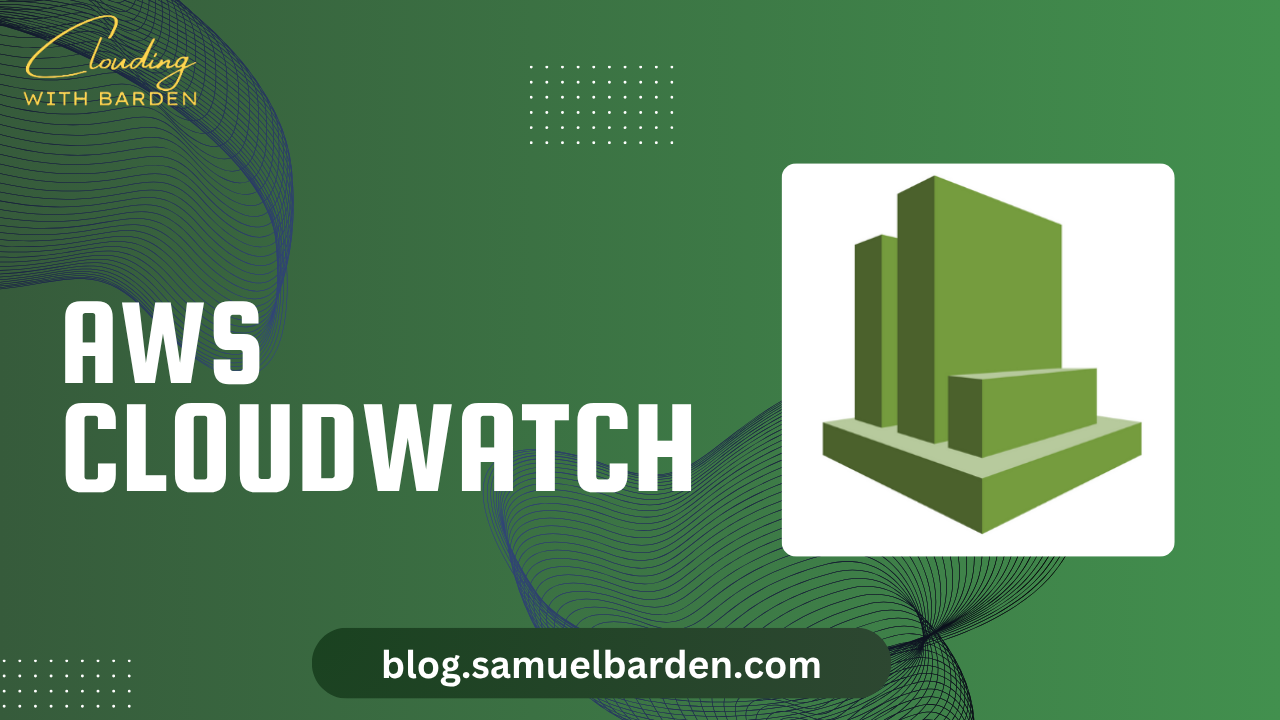Your cart is currently empty!
In cloud-native environments, visibility is the cornerstone of operational excellence. AWS CloudWatch is Amazon’s integrated service for monitoring and observability within the AWS ecosystem. With it, you can gain critical insights into the performance and health of your resources, automate responses to system events, and ensure compliance with your service-level objectives (SLOs).
This post is intended to provide a comprehensive and technically accurate overview of AWS CloudWatch—its architecture, features, use cases, and advanced configurations—so you can maximize its potential before relying on third-party observability tools.
What Is AWS CloudWatch?
AWS CloudWatch is a cloud-native monitoring service designed for observability within the AWS ecosystem. It provides a unified view of your applications, infrastructure, and services. CloudWatch collects and tracks data in the form of metrics, logs, and events, enabling both real-time monitoring and historical analysis. It also facilitates automated responses via CloudWatch Alarms, Events, and Dashboards.
Key components include:
- Metrics: System and application performance data (e.g., CPU usage, memory utilization, request rates).
- Logs: Raw event logs and log data from AWS resources and your applications.
- Alarms: Notifications or automated actions triggered by metric thresholds.
- Dashboards: Custom visual representations of monitoring data.
- Events: Real-time event-driven architecture for responding to changes in your environment.
While CloudWatch is integral to AWS, its architecture allows it to integrate seamlessly with third-party tools, making it adaptable for hybrid and multi-cloud environments.
Core Features and Capabilities
1. CloudWatch Metrics: Real-Time Resource Monitoring
CloudWatch Metrics provide the foundation for monitoring in AWS. Every AWS service emits predefined metrics that provide insight into resource utilization, performance, and operational health.
- Predefined Metrics: AWS automatically generates metrics for core services such as EC2 (e.g.,
CPUUtilization,DiskWriteOps), RDS (e.g.,FreeableMemory,ReadLatency), Lambda (e.g.,Invocations,Duration), and more. - Custom Metrics: For application-specific insights, you can publish custom metrics via the CloudWatch API or SDK. These metrics can be integrated with dashboards and alarms, and CloudWatch supports a variety of metric data types, including counters, gauges, and histograms.Example: Custom metrics can be used to track business-critical events like user signups, error rates, or API response times.
- High Granularity: Metrics are available at fine granularities (1-minute intervals by default, down to 1-second resolution with detailed billing). This allows for high-fidelity tracking of transient issues like spikes in traffic or temporary resource saturation.
2. CloudWatch Logs: Comprehensive Log Management
CloudWatch Logs is an essential feature for storing, managing, and analyzing log data from AWS services, EC2 instances, Lambda functions, containers, and custom applications.
- Log Groups and Streams: Logs are organized in Log Groups, which represent a collection of related log streams (e.g., logs from an application or service). Each Log Stream is a sequence of log events that share the same source, such as a specific EC2 instance or Lambda function.
- Log Retention: CloudWatch Logs supports customizable log retention policies. You can set logs to expire after a certain time, or use Lambda functions to automate log cleanup. For compliance-heavy environments, this feature helps manage storage costs and adhere to regulatory requirements.
- CloudWatch Logs Insights: Logs Insights provides a powerful query language that allows you to search, filter, and visualize your logs. It’s similar to SQL but optimized for log data, enabling users to perform complex searches, aggregations, and even time-series analysis.Example: You can query application logs to identify trends in error rates, analyze HTTP request latency, or detect failed login attempts.
3. CloudWatch Alarms: Proactive Monitoring and Automation
CloudWatch Alarms enable proactive monitoring by triggering notifications or automated actions when specified thresholds for CloudWatch metrics are breached. Alarms can notify you via Amazon SNS (Simple Notification Service), invoke AWS Lambda functions, or auto-scale EC2 instances, ensuring that you can address issues immediately.
- Static Thresholds: Set thresholds for metrics like
CPUUtilization > 80%, and CloudWatch will trigger actions when the threshold is met. - Anomaly Detection: Using machine learning, CloudWatch can create alarms based on anomalous behavior rather than static thresholds. This allows for dynamic detection of abnormal spikes or dips in metrics, such as CPU or memory usage, without having to manually tune the alarm.
- Composite Alarms: Composite alarms allow you to combine multiple alarms using Boolean logic (AND, OR). This helps reduce alert fatigue by suppressing false positives and only notifying you when multiple critical conditions are met.
4. CloudWatch Dashboards: Visualize and Aggregate Data
CloudWatch Dashboards allow you to create custom visualizations of key metrics, logs, and alarms from various AWS resources. Dashboards aggregate information from different AWS regions and accounts, providing a centralized view of your monitoring data.
- Custom Widgets: Dashboards can include different types of widgets, such as line charts, text widgets, and stacked bar charts. Widgets can be configured to display specific metrics (e.g., CPU, memory, and latency) or log query results.
- Cross-Account Dashboards: CloudWatch Dashboards support multi-account and multi-region views, which is particularly useful for large organizations with a distributed AWS infrastructure.
- Embedding Alarms: Alarms can be embedded directly into dashboards, providing real-time alerts alongside your visualized data. For example, a dashboard displaying EC2 instance metrics might also show the current status of associated alarms.
5. CloudWatch Events: Real-Time Event-Driven Automation
CloudWatch Events is designed for responding to system changes in near real-time. Events capture changes within your AWS environment (e.g., EC2 instance state changes, security group modifications, Auto Scaling activity) and can trigger actions such as invoking a Lambda function or sending notifications via SNS.
- Event Patterns: CloudWatch Events uses event patterns to identify specific changes or activities within your AWS environment. You can filter events based on source, resource type, and other attributes to take action on specific changes.
- EventBridge: Amazon EventBridge is a more advanced, serverless event bus that extends CloudWatch Events. It enables you to build event-driven architectures by routing events from AWS services, integrated applications, or custom applications to various targets (e.g., Lambda, Step Functions, EC2).
6. CloudWatch Contributor Insights: Advanced Performance Analysis
CloudWatch Contributor Insights helps you analyze the key contributors to performance issues or bottlenecks in your system. It breaks down your metric data to identify which users, requests, or resources are causing the most significant impact on your system.
- High-Cardinality Data: Contributor Insights is especially valuable when working with high-cardinality data—such as tracking specific users, IP addresses, or resources. It can help identify performance bottlenecks and provide insights into the root causes of application errors or performance degradation.Example: If your API response times are high, Contributor Insights can help you pinpoint which users or endpoints are responsible for the majority of requests, so you can focus on optimizing those areas.
- Root Cause Analysis: By identifying the top contributors to performance metrics, Contributor Insights can help streamline root cause analysis, making it easier to detect patterns and troubleshoot issues in complex distributed systems.
7. CloudWatch Synthetics: Simulate User Interactions for Availability Monitoring
CloudWatch Synthetics is a feature designed to monitor web applications by simulating real user interactions. It uses canaries, which are lightweight scripts that simulate browser interactions (e.g., clicking buttons, filling forms) to test the availability and performance of your web applications.
- Canaries: These are automated scripts that run at scheduled intervals, mimicking real user behavior to check the availability and functionality of your application. Canaries can also run health checks on critical API endpoints to verify their performance.
- Synthetic Monitoring: Unlike traditional monitoring, which relies on system-level metrics (e.g., CPU, memory), synthetic monitoring simulates real user interactions, helping you track issues like page load times, application availability, and third-party service performance before users are impacted.
- Proactive Alerts: With canaries running regularly, CloudWatch Synthetics can alert you about potential issues before they affect real users, enabling proactive issue resolution.
Best Practices for Leveraging CloudWatch
- Granular Metrics for Critical Resources: Always collect metrics for core resources like EC2, RDS, Lambda, and ELB. Consider publishing custom metrics for critical application-level events (e.g., order processing time or payment success rates).
- Use CloudWatch Logs for Debugging: In addition to standard monitoring metrics, integrate CloudWatch Logsinto your application to gain insights into detailed operational behavior. Use Log Insights for structured, time-bound queries that aid in troubleshooting.
- Automate Responses with Alarms: Implement alarms with automated actions, such as Lambda invocations or Auto Scaling, to minimize downtime and reduce the need for manual interventions. For example, trigger an automatic rollback or restart upon specific error thresholds.
- Centralized Dashboards: Use CloudWatch Dashboards to provide your team with a real-time overview of system health. Centralize views across AWS accounts and regions to get a unified picture of your infrastructure.
- Utilize Anomaly Detection: For dynamic workloads, leverage CloudWatch Anomaly Detection to identify unusual system behavior without needing to define static thresholds.
Why AWS CloudWatch Is Critical for Your Cloud Strategy
AWS CloudWatch is an indispensable tool for cloud monitoring and observability, enabling teams to gain deep insights into the performance, health, and behavior of their AWS resources. By leveraging its powerful features, including metrics, logs, alarms, and dashboards, you can build a robust monitoring solution that helps ensure operational excellence.
However, while CloudWatch is highly capable, it may not meet every need for highly complex environments. Advanced users often integrate third-party observability tools with CloudWatch to extend its capabilities, especially when working with hybrid or multi-cloud architectures.
By mastering CloudWatch and integrating its features effectively, you can ensure your AWS environment is secure, highly available, and always performing optimally.
Share with
/









Leave a Reply